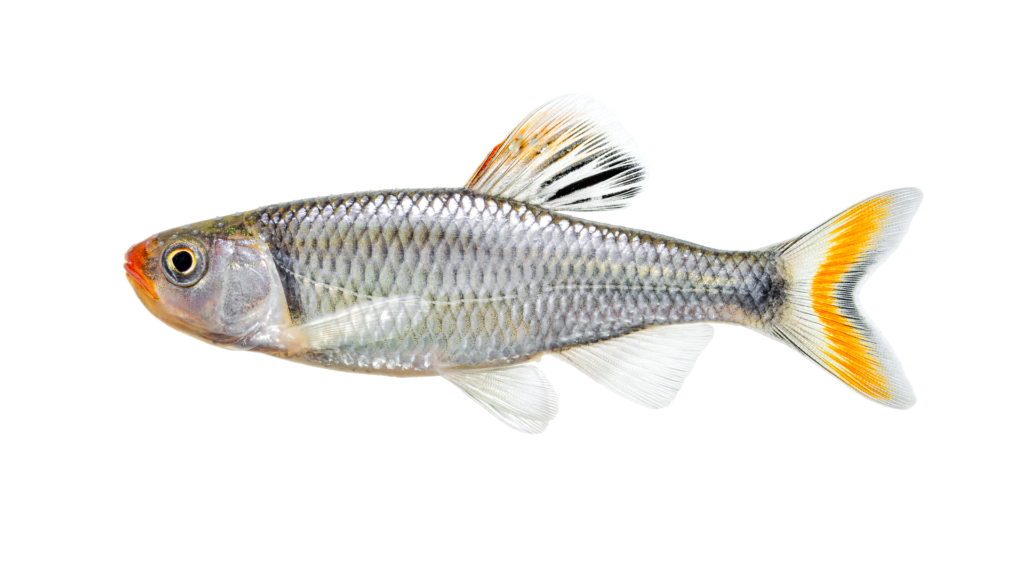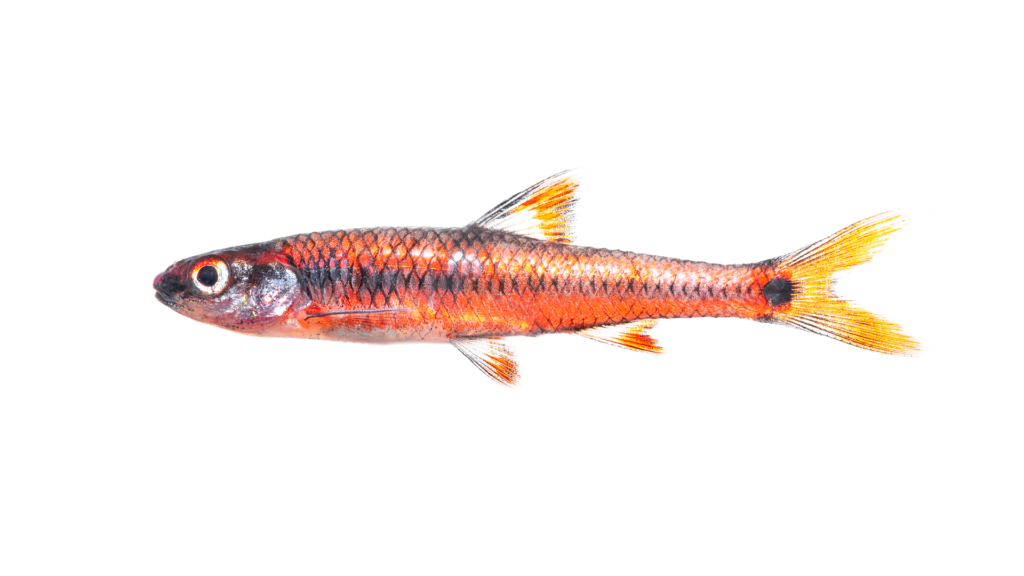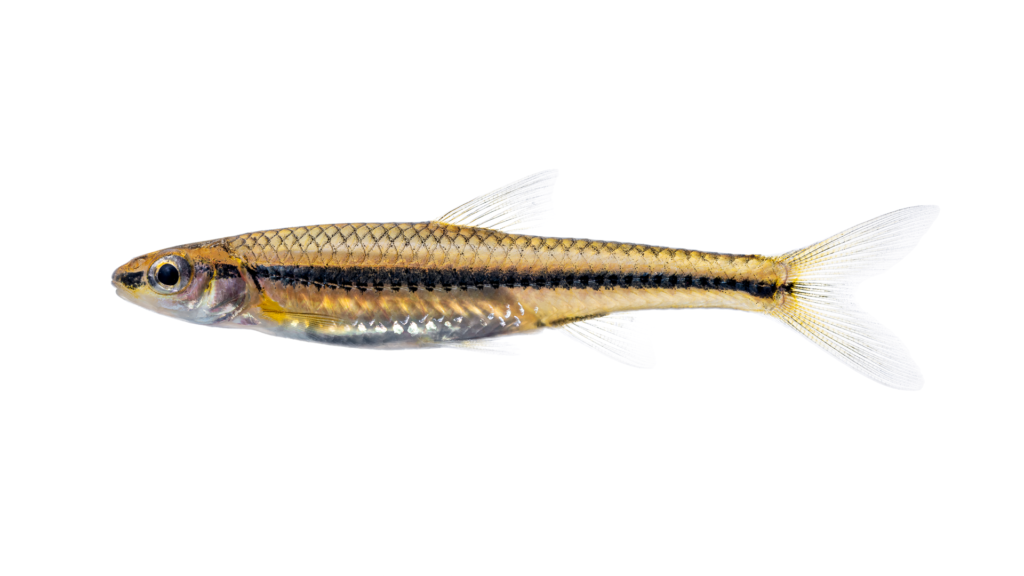By the NCFishes.com Team
The recognition by ichthyologists of Koi , Cyprinus rubrofuscus, as a separate species from Common Carp, Cyprinus carpio, its distribution across North Carolina, and the posting of the blog on Koi (https://ncfishes.com/koi-cyprinus-rubrofuscus-lacepede-in-north-carolina/) necessitated an update to the Identification Key to the Barbs and Carps, Asian Carps, and Minnows (Families Cyprinidae, Leuciscidae, and Xenocyprididae) in North Carolina (see pdf link below). In the process of updating and correcting some errors in the identification key, we’ve also added some new images of several species.

As posted previously, key characteristics for the proper identification of these three families of fishes include the presence/absence of a frenum; lateral stripe width and length; lateral line scale count; the number of un-pored lateral line scales; the positioning and pigmentation of the dorsal fin; the anal ray count; presence of spines vs. rays; the position of the mouth; the pharyngeal teeth count; the presence/absence and length and shape of maxillary barbels; the overall color pattern; and the geographical distributions of the species (please refer to the Identification Key to the Barbs and Carps, Asian Carps, and Minnows (Families Cyprinidae, Leuciscidae, and Xenocyprididae) in North Carolina).

Many species can easily be told apart from one another. However, the identification of minnows with 7 or 8 anal rays and immature and female Nocomis spp., where species co-occur, can be very challenging.

If you have troubles with your identifications, just send us (https://ncfishes.com/contact/) an e-mail and include as many quality digital photographs as you can along with all the pertinent locality descriptors so that we will know from where the fish came.